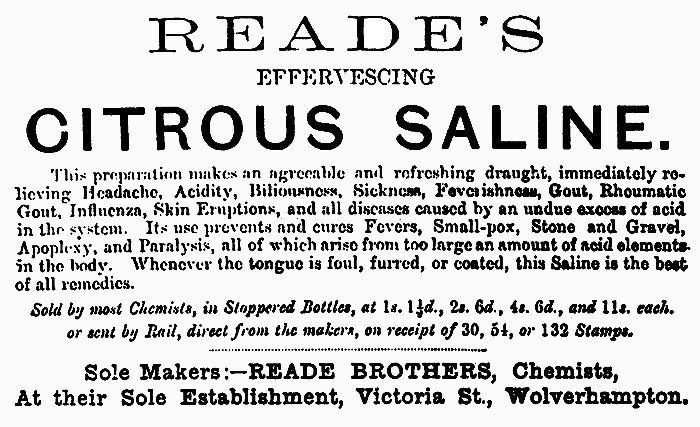| Bad Weather and
Epidemics During the first three months of
1870 there was a severe frost and a lot of snow, which
meant that work outdoors was almost impossible. Many
people were out of work due to the severe weather and so
the council set up a fund to raise money for the
distribution of bread and oatmeal to the poorer members
of society.
There was a great storm on the
night of Sunday the 15th October, 1877, during which a
large number of trees and chimneys were blown down.
The Smallpox Epidemic
A smallpox epidemic broke out in
Wolverhampton in the autumn of 1871. Many people
suffered from the disease, particularly the poorer
people living in slum properties. There were many
fatalities including the sister of Mr. Edwards, a
butcher with a shop on Penn Road. The disease greatly
alarmed the local population, to such an extent that Mr.
Edwards’ sister was buried within 48 hours of her death.
Vaccinations were offered free of charge and many
surgeons were employed as public vaccinators. Posters
were put-up, all across the town, advising people to get
vaccinated.
Dr. Manby was appointed Medical
Officer of Health and the General Hospital soon filled
with smallpox patients. The old, empty police station in
Garrick Street (later the Free Library) became a
temporary hospital. To prevent the spread of the
disease, smallpox inspectors were appointed to visit
places were many cases occurred and to ensure that
anyone affected would be transferred to the temporary
hospital. They also disinfected houses and courtyards
and had them cleaned and whitewashed.
By December, 109 people had died.
57 of them had not been vaccinated and 39 had only been
vaccinated once. The vaccinations were successful and
the disease eventually disappeared in July, 1872. During
the epidemic, 483 people died from the disease, which
had cost the Borough over £2,000.
During the epidemic, the Local
Government Board’s Medical Officer, Dr. Ballard, was
sent to Wolverhampton to investigate the cause of the
epidemic. He reported that the sanitary conditions in
the town were most unsatisfactory. Water from wells used
for drinking and cooking was often contaminated with
sewage and dangerous to life. The town was badly drained
with inadequate sewers, which should receive the
immediate attention of the Town Council.
Dr. Manby retired from his post as
Medical Officer of Health and was replaced by Dr. Love,
who took control of a staff of medical inspectors. The
Council also appointed Mr. E. W. T. Jones as Borough
Analyst, whose job it was to test drinking water and
check the quality of food.

An advert from 1877.
Another Epidemic
In 1873 there was an outbreak of
typhoid, which first appeared in Darlington Street. The
first victims included the wife and daughter of the Rev.
T. G. Horton of Queen Street Congregational Church, the
two daughters of the Rev. G. Everard of St. Mark’s
Church, and the wife of Mr. Smallwood, a draper. They
all died within a few days and the disease rapidly
spread to other parts of the town. Up to 38 people in a
1,000 died. Dr. Love, the Medical Officer, reported that
the fever had been caused by water polluted with sewage.
The outbreak began when a milkman who supplied houses in
Darlington Street had been diluting his milk with a
little water from the Black Brook, which was an open
sewer. 69 of his customers, from Snow Hill to the bottom
of Darlington Street had typhoid, thirteen of them died
from the disease.
At the next council meeting it was
decided that any well containing water that was found to
be polluted, should immediately be closed. The fever
gradually disappeared and Dr. Ballard, the Special
Commissioner from London, who visited the town in
December 1873, reported that open piles of refuse and
animal waste and wet ash pits should be done away with.
He also reported that the narrow, crooked streets, the
poorly ventilated courtyards, and the old dilapidated
slum dwellings were a constant source of danger.
Although Dr. Ballard’s report was considered by the
Sanitary Committee, nothing was done for several years.

An advert from 1877. |